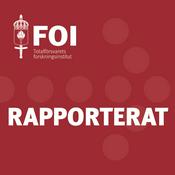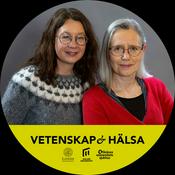Tillgängliga avsnitt
5 resultat 13
- Surprise, Startle, and Flight Deck CognitionThe source, an excerpt from CAP 737 Chapter 7 - Surprise and Startle, discusses the difference between the startle reflex and the fight or flight response, particularly in the context of pilot performance and aviation safety. The startle reflex is presented as a momentary disruption with little lasting impact on cognition, while the fight or flight response, triggered by a perception of serious threat, results in a sustained, highly-focused, and potentially detrimental narrowing of cognitive function. The text explores how the fight or flight state can create a vicious circle for pilots when dealing with ambiguous or complex problems on modern flight decks, favoring simple, well-learned tasks over complex assessment. Finally, the chapter suggests training resolutions and countermeasures, such as using simple, rule-based tasks (like checklists) to interrupt the negative cycle and build pilot confidence against unexpected events.--------32:41
- Decision Making: Analytical, Quicker, and Intuitive ApproachesThis focuses on decision-making processes, particularly within the context of aviation. It categorizes decisions along a continuum, ranging from effortful analytical decisions to quick, intuitive ones and those using unconscious shortcuts. The document elaborates on the characteristics, applications, and challenges of analytical decision-making, including the use and limitations of decision aids and the importance of reviewing decisions. It then explores quicker decision mechanisms like biases and heuristics, acknowledging their efficiency but also their potential for error, before discussing very fast, recognition-primed intuitive decisions and their basis in expertise. Throughout, the text emphasizes the practical application of these theories for training and assessment, encouraging a nuanced understanding of real-world decision-making beyond idealized models.--------1:01:46
- Vigilance and Monitoring in Aviation Operations*NEWThe text discusses vigilance and monitoring in aviation, particularly in relation to pilots and automated systems.It defines vigilance as sustained attention to detect irregularities and explains the concept of vigilance decrement, where performance declines over time due to cognitive load—not boredom or fatigue alone.Monitoring is described as the practical act of gathering information to maintain situational awareness. Although the terms are often used interchangeably, they are recognized as distinct.The text highlights how even experienced pilots experience a decline in monitoring, especially when autopilot is engaged. It emphasizes that training cannot eliminate this natural phenomenon but can help pilots understand and mitigate its effects, including the importance of task-sharing to maintain attention.--------35:42
- Flight Crew Vigilance and MonitoringThe document discusses alertness and monitoring in the context of aviation and defines alertness as sustained attention to detect unusual events, especially in relation to automated systems. It highlights that alertness declines significantly over time—known as vigilance decrement—even within 15 minutes, and that this is not due to boredom but rather high workload, frustration, and stress. The document distinguishes between alertness (general awareness) and monitoring (gathering and interpreting information), noting that monitoring can deteriorate independently of alertness decline. It emphasizes that training can teach pilots to understand vigilance decrement but cannot eliminate it, and suggests training exercises that focus on risks, solutions, and discussion rather than dictating what pilots should monitor. Finally, it notes that monitoring performance is closely linked to workload and situational awareness, making the latter difficult to assess based solely on observation of monitoring.--------6:39
- Pilot Cognition: Processing, Perception, and AttentionThis document describes information processing in the brain, from sensation and perception to conscious and unconscious processing, reaction, and feedback. It also discusses perception in more detail, including how we perceive the world and the potential illusions that may arise, especially in relation to flying. Finally, the text addresses attention and its limitations, as well as how attention, perception, and information processing relate to pilot competencies and flight safety, including situation awareness, decision-making, and workload management. The text provides a theoretical basis for more applied chapters.--------7:30
Fler podcasts i Vetenskap
Trendiga poddar i Vetenskap
Om SCA CRM podcast
Learn more about human factors in aviation
Podcast-webbplatsLyssna på SCA CRM podcast, Naturmorgon och många andra poddar från världens alla hörn med radio.se-appen

Hämta den kostnadsfria radio.se-appen
- Bokmärk stationer och podcasts
- Strömma via Wi-Fi eller Bluetooth
- Stödjer Carplay & Android Auto
- Många andra appfunktioner
Hämta den kostnadsfria radio.se-appen
- Bokmärk stationer och podcasts
- Strömma via Wi-Fi eller Bluetooth
- Stödjer Carplay & Android Auto
- Många andra appfunktioner


SCA CRM podcast
Skanna koden,
ladda ner appen,
börja lyssna.
ladda ner appen,
börja lyssna.



































